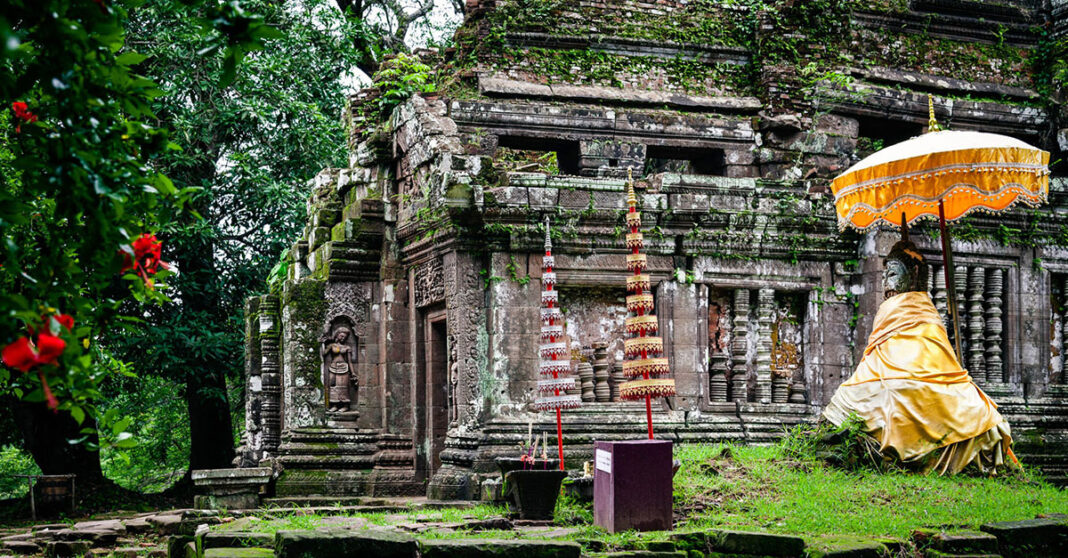Vat Phou, an ancient temple in Laos’ Champasack Province, has been featured in a National Geographic Travel article as a hidden gem for travelers seeking serenity, history, and beauty without the crowds.
This UNESCO-listed site was praised for its “striking resemblance to Cambodia’s Angkor Wat” but with a quieter, more intimate experience.
In the article, the National Geographic draws attention to Vat Phou’s unique architectural and spiritual qualities, describing it as a “travel dupe” for Angkor Wat. While Cambodia’s iconic temple attracts some six million tourists a year, Vat Phou remains a relatively untouched site.
Background Similarities
Both temples were constructed during the Khmer Empire, which spanned from the 9th to 15th centuries, and share distinctive elements such as carved stone pillars and religious symbolism rooted in Hindu cosmology.
However, the National Geographic article points out that their layout sets them apart.
Angkor Wat features concentric enclosures symbolizing Mount Meru, the mythical center of the universe, while Vat Phou is laid out in a linear design along a one-mile raised causeway, leading visitors up a hillside to a sanctuary fed by a natural spring.
This ascending pathway, broken into seven stone terraces, was highlighted as a key reason for Vat Phou’s spiritual impact.
The design allows travelers to experience a slow climb through sacred structures, culminating in a moss-covered shrine adorned with carvings of apsaras and Hindu deities.
Originally housing a linga symbolizing the god Shiva, the shrine later came to feature a Buddha statue after the decline of the Khmer Empire in the 13th century.
History, Myth, Solitude Intertwined
National Geographic also pointed to Vat Phou’s setting as a distinguishing feature.
The temple complex sits at the base of Lingaparvata, or Linga Mountain, named for its phallus-shaped peak associated with Shiva.
Just four miles from the town of Champasak, with its architecture and riverside, Vat Phou is seen as easily accessible, providing a rare laid-back feeling.
The article also touched on the site’s mysterious origins.
While its full history is still unclear, local legend says King Kammatha built the first sanctuary after mythical ogres demanded his daughter, Nong Sida. A small pavilion and hidden library named after the princess still stand nearby.
Annual Celebration Embracing the Tradition of Vat Phou Festival
Beyond its archaeological significance, the temple continues to serve as a spiritual center and a gathering place for celebration.
Vat Phou is revered by many Lao people as a sacred site believed to possess protective powers. It continues to serve as a destination for worship and cultural tourism.
Each year, Champasack Province hosts the Vat Phou Festival to celebrate the temple’s legacy. The festival featured a wide variety of traditional and casual activities, catering to both local and international visitors.
According to the National Geographic, it’s the combination of history, mythology, and near-complete solitude that makes Vat Phou one of the region’s most underrated sacred sites.



